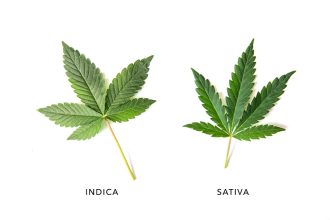The first iteration of chromatography was developed by Mikhail Tswett in 1906. He was a botanist from Russia who produced a colorful separation of plant pigments using a column of calcium carbonate.
Since then, modern science has made leaps and bounds towards accurate and efficient systems that produce high-quality results in record time.
HPLC chromatography can be confusing, and with the multitude of tools, instruments, and materials available, how do you know where to begin?
We’re here to give you the full scoop on what HPLC actually is, and why vials are a vital part of the process.
What Is HPLC Chromatography?
HPLC stands for high-performance liquid chromatography. At its core, HPLC is an analysis process that separates, identifies, and quantifies various components in a singular mixture.
These days, HPLC is being used more and more to work out the various levels of cholesterol and other sterol substances in food and tissue extracts.
That being said, it is used predominantly to analyze antibiotics and medical samples. It’s often compared to other conventional microbiological assays, but is superior because of its sensitivity, analysis time, and specificity.
How Does it Work?
HPLC works through the use of pumps, which pass pressurized, liquid solvents through a column. These solvents contain a sample mixture that is moved through an absorbent, solid material. This material is often made from dense, chemically functionalized beads.
Each of these components interacts slightly differently with the absorbent material, which results in different flow rates for each component. This leads to different stages of separation as they flow out of the column.
A modern HPLC machine gives sharper clarity and resolution than standard liquid chromatography.
What Is It Used For?
HPLC has been widely used in the fields of manufacturing, legal areas, research, and medical practice. In terms of legal work, an HPLC test can detect performance-enhancing drugs in urine. In research, it is used to separate complex biological samples and other synthetic chemicals.
In medical terms, HPLC can even detect levels of specific nutrients in the blood, like vitamin D and other minerals.
The possibilities for HPLC methodology are practically endless and have been a game-changer in modern science.
The Value of the Vial
HPLC vials come in several finishes that guarantee chemical compatibility. A chromatography vial must be able to separate organic and inorganic compounds for analysis and because of the varied needs, there are several sizes, colors, and septa materials.
How to Choose the Right Vial
While we may consider the vial a simple, temporary container, choosing the correct vial will go a long way to ensuring the results are as accurate as possible.
Sites like www.chromtech.com make it easy to understand what you need and how to find it efficiently.
That being said, there are some key things to consider:
- Size
- Color
- Compatability
- Cap and Septum
- Vial Material
Vials have different closure types, from crimp or snap closures to screw-type closures. Different machines will require not only different sizes but different closures too.
For example, an Agilent autosampler will take 11mm crimp and 9mm screw-cap vials, but not 10mm and 8mm screw caps won’t work. This is largely because the space between the cap and the shoulder of the vial differs from instrument to instrument.
This is why it’s important to check the compatibility of your autosampler.
Screw-top vials provide a secure alternative to crimp tops, providing optimal seal while still maintaining the integrity of the data.
If the sample you’re working with is light-sensitive, then you want to use amber vials. If it’s not a concern, a glass vial is more than adequate.
Man and Machine
We have long moved beyond using chromatography for solely studying plant pigments. HPLC chromatography provides the means of separating complex, homogenous mixtures into individual streams of information.
With great power (and science) comes great responsibility. And choosing the right vial for your needs is the responsible choice.
If you enjoyed reading this, check out some of our other great articles!















